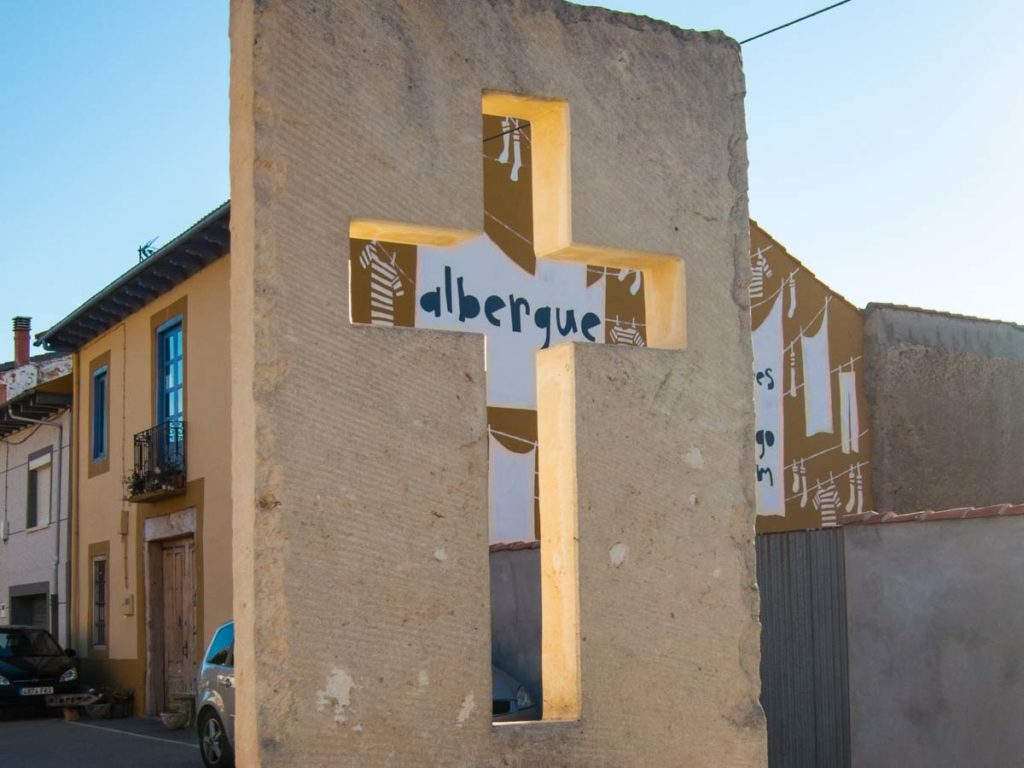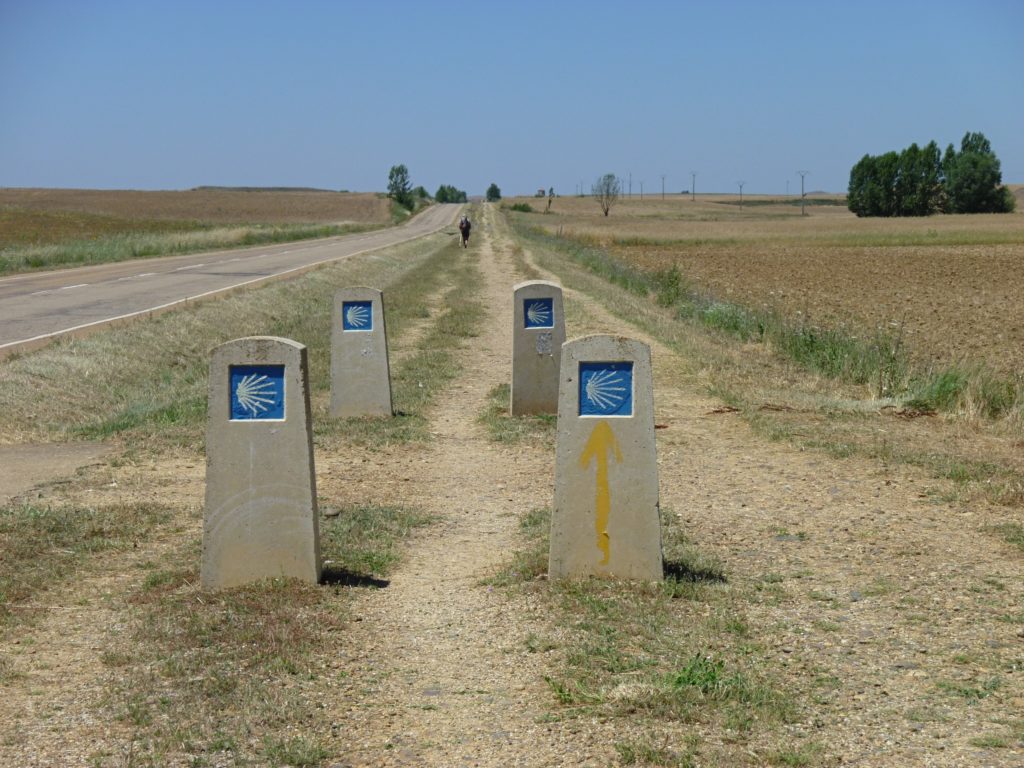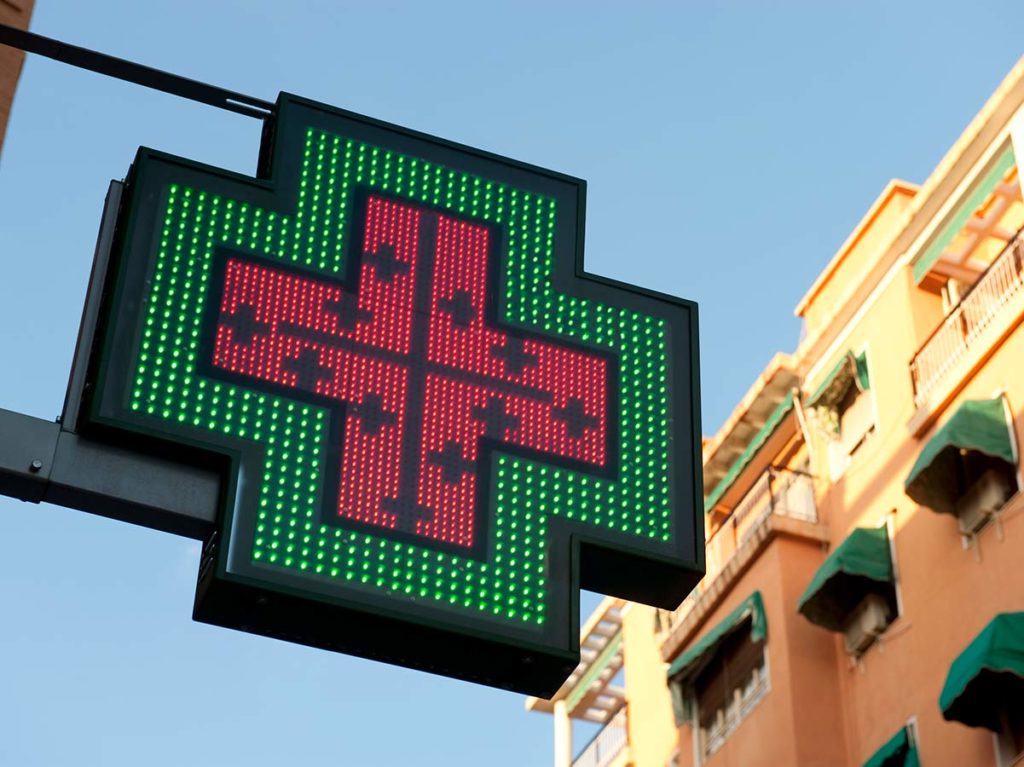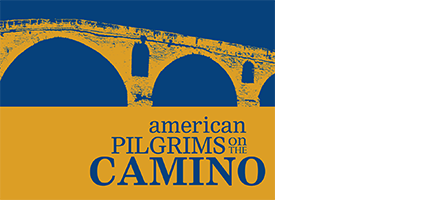What to Expect on the Camino
Part of our mission is to provide information that helps pilgrims find inspiration, plan and execute their pilgrimages. If you are in the early stages of planning your Camino, use our Camino Planning page to answer basic questions about route options, timing, credentials and the Compostela.
The purpose of this page is to help you understand what to expect once you are out on the Camino de Santiago. It will cover topics like what to pack, how accommodations work, getting mobile access, food and other info.

What to Expect on the Camino: Table of Contents
- Camino gear, packing, shoes and backpacks
- Accommodation tips
- Daily walking distances
- What does a typical day look like
- What’s the terrain like
- Waymarking & getting lost
- Transportation options
- Medical concerns
- Dealing with blisters
- Food and drink
- How to handle money
- Wifi, mobile and data
- Do I need to learn Spanish?
- Things to do once home
- More online resources
Your Camino Gear
What Should I Pack for the Camino?
Life is blissfully simple on the Camino and you don’t need much. It’s a well-supported walk and you don’t need a heavy backpack. Most people simply carry 2-3 days worth of clothes, some outerwear, a sleep sack, a modest toiletry kit, small towel, rain cover and some sundries. This all fits into a 30-40 liter backpack and should weigh 14-25 lbs.
A good rule of thumb is to keep your pack weight to ~10% of your body weight. Use our packing list to help you get started.
Fit matters with your backpack so be sure to be properly fitted at a sporting goods store that understands the Camino and choose a pack sized for your gender or body type.
What Kind of Shoes Do I Need?
The Camino is not a technical hiking trail. As such, many people choose to wear trail runners or light hiking shoes. But people’s foot care needs vary widely and some folks choose to wear heavier hiking boots. It does rain in Spain, and there are multiple opinions on Gore-Tex vs. not. Even when wet, most non-waterproofed shoes will likely dry out overnight (especially when stuffed with newspaper) and they breathe more easily. When you are fitted for shoes, consider sizing up to accommodate foot swelling.
No matter what you decide, be sure you’ve walked a decent amount of mileage in your shoes. Break them in properly by trail-testing them with multiple back-to-back hikes, but don’t wear them out in advance.
Socks also matter and can be critical in helping you avoid blisters. Most people use either a liner with a wool outer sock, a padded CoolMax sock, a double-layer sock (such as Wrightsock), or toe socks (such as Injinji).
Backpack Portaging
There are backpack transport services available on all of the more commonly traveled Camino routes. You can portage your bag the entire distance, or just do it occasionally. If you don’t feel you can safely carry your backpack, or you just want a break for a day, talk to any albergue volunteer or hotel desk person and they can direct you to an affordable backpack transport service. Many of them keep envelopes and forms at the albergues.
If you know for sure that you want to portage your pack, you can also get an online account for Correos, which is the Spanish postal service. Other services are available as well. The portage services typically cost €8-12 per day.
Where to Stay
What Types of Accommodations Are There?
Accommodations run the gamut! Most pilgrims choose to stay in albergues (pilgrim hostels). They are specific to pilgrims and you must show your credential in order to stay there. Even if you don’t normally stay in hostels when you travel, staying in an albergue can be a very special (and social) part of your Camino experience.
Most albergues charge between €10-€20 per night which will get you a bunk bed, shared bathroom, occasionally access to the kitchen to prepare food, and sometimes a shared meal. Some operate on the “donativo” model meaning there isn’t a set price for guests, but nor are they free. It is up to you how much you pay.
Albergues can be municipal, parochial, or privately run. The first two are run by Camino associations, religious organizations or local towns.
Staying in an albergue is a group experience, usually in a bunkroom. Bringing some earplugs can save you from sleepless nights due to snorers. And an eye mask can help you sleep when the early risers start turning on the lights. The room are not gender-segregated, but the bathrooms usually are.
You can also find family-run hotels, guesthouses and B&Bs in the €25-€45 range. In larger cities, you can use a hotel booking site and find business and luxury hotels. The pinnacle of the accommodation pyramid is the Spanish Parador hotel chain, which is a network of historic hotels.
Do I Need Reservations?
This is a highly personal matter. Some folks prefer the peace of mind that comes with booking ahead. Others don’t want to be locked into a set schedule and prefer to do things on the fly, trusting that the “Camino will provide.”
You can reserve private albergues by calling or messaging ahead. All of the municipal albergues are first come/first served.
If you walk or bike a popular Camino route from June to September, or during a major Spanish holiday, things can and do get busy. Often people book the first few nights and then see how it goes. Other people prefer to walk off of the typical guidebook stages, which helps to avoid choke-points in busy towns.
Are There Bedbugs?
Are bedbugs present on the Camino? Yes, they can be, but they aren’t always an issue. Your best defense is to learn what to look for in whatever bed you will be sleeping on. Be aware that, although they can be very annoying and perhaps hard to eradicate, they do not carry disease.
As a preventative measure, many pilgrims prefer to spray the inside of their backpack and the outside of their sleep sack with a pesticide, such as Permethrin.
A moderate amount of heat will kill the bugs (60°C or 145°F), so washing your things in a machine on hot water or tumble drying can be effective. For things that cannot be washed, putting them in a black plastic garden bag and leaving it in the hot Spanish sun for a few hours might or might not be effective depending on the temperature reached.
Are There Laundry Facilities?
All albergues have at least an area for hand washing your clothes and drying them on a line. Increasingly, they offer a wash machine, and sometimes a dryer. Most larger towns also have good commercial laundromats.
How Do I Keep My Belongings Safe?
The Camino is a very safe and trusting place. But petty theft can happen. And it’s not uncommon for tired pilgrims to lose belongings. The albergues very, very seldom provide lockers. So, most pilgrims keep track of their wallets and passports by keep them on their person when out and about.
Keeping your belongings tidy and in your pack will discourage theft and make it less likely that you’ll accidentally leave something behind in the morning.

How Far Should I Walk Every Day?
Most people walk between 20-27 kilometers (12.5-17 miles) per day. It’s important to know your limits and listen to your body. Many people begin by walking shorter days, which helps them acclimate. Or they give themselves a break by doing some shorter days or taking rest days.
Conversely, you may find your initial assumptions about how far you can walk each day were too conservative. In that case, you can speed it up.
Either way, be sure to leave time for seeing Spain’s many fantastic religious, cultural and historical sites.
What Does a Typical Day Look Like?
You can construct your day however you wish. But there are some typical rhythms to walking a Camino.
You’ll typically get up fairly early, perhaps as the sun is rising. The cafes may not be open yet, so you’ll walk a bit then stop for breakfast and coffee. Walk some more and then maybe second breakfast. Walk…then lunch.
Most people arrive at their destination between 1-3pm. You’ll grab a shower, wash your clothes, and rest or see the town. If you’re lucky, the town will be having a festival or there will be an interesting cultural or historical site to see.
Spaniards eat dinner late, but pilgrims usually eat dinner around 7pm. People typically begin going to bed at 9:30 and quiet time usually starts at 10pm.
Wash, rinse and repeat the following day.
What’s the Terrain Like?
The terrain on most Camino routes is all over the place. Expect mountain passes, forest paths, farm roads, city sidewalks and the occasional roadside walking.
The guidebooks do a good job of indicating expected elevation and pavement vs dirt for the common stages. This can help you plan your distances for each day.

Can I Get Lost on the Camino?
All of the major Camino routes are very well signposted. You’ll find concrete bollards, painted yellow arrows, and shell symbols embedded in sidewalks and walls. Generally, the tip of the shell indicates the direction of Santiago.
Of course, you can get lost, particularly if you set out in the early morning dark or aren’t paying attention. And getting out of the larger cities can be tricky because the signs can get lost in all of the visual noise. But the alert pilgrim is unlikely to become profoundly lost. If you want backup, we recommend downloading a Camino app. There are several offering excellent maps that you can download for offline use.
Here’s our article listing the most popular apps.
How Do I Get To and From the Camino?
The most common international airline gateways for the Camino are Madrid, Barcelona, Paris and Porto. From there, you can use a series of domestic flights, trains or buses to get to your starting point.
Our route overviews offer suggestions on how to get to the starting point of each of the more popular routes. You should plan to spend the better part of one day and multiple transfers getting there. In addition, it’s wise to consider giving yourself some time to shrug off jet lag before setting out.
If you are a long-range planner, be aware the Spanish bus and rail schedules won’t let you book far in advance. You must wait until closer to your arrival date.
If you know for sure that you want to start in Saint Jean Pied de Port, use our guide for getting to St. Jean to help you with logistics.
Here are a few great resources:
- Rome2Rio does an excellent job of mapping point-to-point routes. You can also book through them or book directly.
- The national rail system for Spain is Renfe. You can use the site to book all manner of Spanish train trips, from high-speed rail to local lines.
- The national rail system for France is SNCF. It’s a popular choice if you are flying into Paris and transiting to St. Jean Pied de Port via Bayonne.
- You can also use Trainline. They sell tickets in multiple countries and their English-language interface is more friendly than Renfe.
- The most common long-distance bus lines in Spain are ALSA and Monbus.
Transportation Options While On the Camino
Bus and train services are frequent, well-organized and fairly inexpensive along the most popular Camino routes. In places where there is no bus or train service, a taxi can usually be arranged. Your albergue host can help you find local resources.
It’s actually quite common for pilgrims to use transport from time to time for various reasons. Perhaps a personal schedule restriction is looming, you’ve developed an injury, or maybe the weather has become untenable. Although it may seem like “cheating,” using transport when needed can keep you out of physical trouble or potentially save you from further injury.
Please note the flexibility for using transport does not extend to using transport within the last 100-kilometer requirement for obtaining a Compostela. This final 100-kilometer stretch must be completed on foot (or 200 kilometers if cycling).

What if I Get Sick or Injured?
There are clinics and health centers in most larger towns. You can find a pharmacy, everywhere, even in smaller towns, which are designated by the green cross sign. Spanish pharmacies have more leeway to offer treatment suggestions than those in the U.S. Both pharmacies and clinics are familiar with pilgrim ailments including blisters, viruses, shin splints, tendonitis and knee issues. By American standards, treatment is good and usually reasonably priced.
Before you leave home, check with your health insurer to see if you are covered overseas and consider buying a supplemental travel insurance policy.
How Do I Deal With Blisters?
Blisters are the most common medical issue on the Camino and if you don’t deal with them proactively, they can cause no end of discomfort…or even end your pilgrimage.
Your primary prevention is to get a properly fitted trail runner or hiking shoe, with room for foot swelling. Then trail test them with long back-to-back walks. Socks matter too and we have advice on our packing list for some types that help with blisters.
While walking, be sure to remove your shoes and air out your feet during breaks. Some people change their socks mid-day. And others mix it up by sometimes walking in sport sandals. If you feel a hot spot coming on, stop immediately and tape or bandage it.
We’re not here to give you medical advice, but if you do get blisters, be proactive about keeping them clean and covered. Use gauze/tape or blister bandages like Compeed to cover them, and consult with a pharmacy on how best to keep them from getting infected.
What About Food and Drink?
Spanish food is plentiful, filling and delicious and there are plenty of places to eat while on the trail. For dinner, many restaurants and cafes will offer a three course “pilgrim menu” for €12-18.
Some albergues will offer a group meal. Others will make their kitchen available for cooking your own dinner. Many of the Spanish grocery stores are now carrying prepared foods, such as salads and shelf-stable entrees.
White bread, pork, eggs, seafood and cheese feature heavily on the Camino. So if you have dietary preferences or requirements, you’ll want to learn the Spanish words for your forbidden foods and order carefully…or be prepared to cook more of your own meals.
For vegetarians and vegans, veggie sandwiches, pasta and lentil dishes are fairly common.
What About Money?
We offer some advice on our pilgrimage planning page on how to budget for the Camino. Some people prefer to land with some €€ in their pocket, which you can usually order from your bank. Other’s prefer to get money when they land.
Cash used to be king on the Camino. But there are more cafes and albergues that are now accepting credit cards. But you’ll still need much more cash than you would would typically use at home. We recommend getting €200-300 at the start and then top up as needed. The guides and apps do a good job of letting you know if an upcoming town has an ATM
Be sure to bring an extra credit or debit card with you in case one fails.
Tipping is not really a think in Spain and Portugal like it is in the US. If you want to round-up for good service, go ahead. But it’s not expected.
What About Wifi and Data?
Many bars, hotels and even albergues offer free wifi. Some carriers, like T-Mobile, include international data and others offer a plan you can add to your phone. If you have an unlocked phone, you can also purchase a local SIM card at the airport or in major cities, or an online eSIM before you go.
You should strongly consider downloading the WhatsApp app. It’s very popular internationally. Using the app, you can make phone calls and send messages. This can be used on either a cellular plan or wifi. You can use it to make accommodation reservations and to stay in touch with your new pilgrim friends.
If your phone plan makes calling home really expensive, you can use WhatsApp, Facebook Messenger or Facetime to make voice and video calls to family and friends at home.
Do You Need Spanish for the Camino?
Most English-only speakers get buy just fine on the Camino using a smile, hand gestures and Google translate. You will meet many pilgrims who speak English. Cafe and albergue staff may have some English knowledge.
But you will have a better experience if you can get some Spanish under your belt. At the very least, you should learn some basic courtesy phrases in Spanish. Here’s a thread in our Facebook group with folks offering suggestions for apps and other language-learning tools.
How to Keep the Camino Alive After You’re Home
Upon return, many pilgrims have a longing to return to the simple rhythm of daily walking and the camaraderie of the Camino. American Pilgrims’ local chapters are a great way to reconnect with the Camino spirit.
Check out our give back page for ideas and opportunities to get involved and inspire the next pilgrims to follow in your footsteps. We have lots of volunteer opportunities and we need your help!
Consider participating in the activities of one of our more than 55 local chapters or making a donation to American Pilgrims. Donations help fund our award-winning Grants program, which provides infrastructure support on the Camino.
Consider taking our approved hospitalero training course. Becoming a certified hospitalero allows you to volunteer at a parochial or municipal albergue.
More Resources
- If you are looking for Camino inspiration, check out our list of Camino books, movies and podcasts.
- Join our Facebook group or subscribe to our YouTube channel.
- Request your credential from us.
- Explore different routes of the Camino.
Rev 06/21/2024

